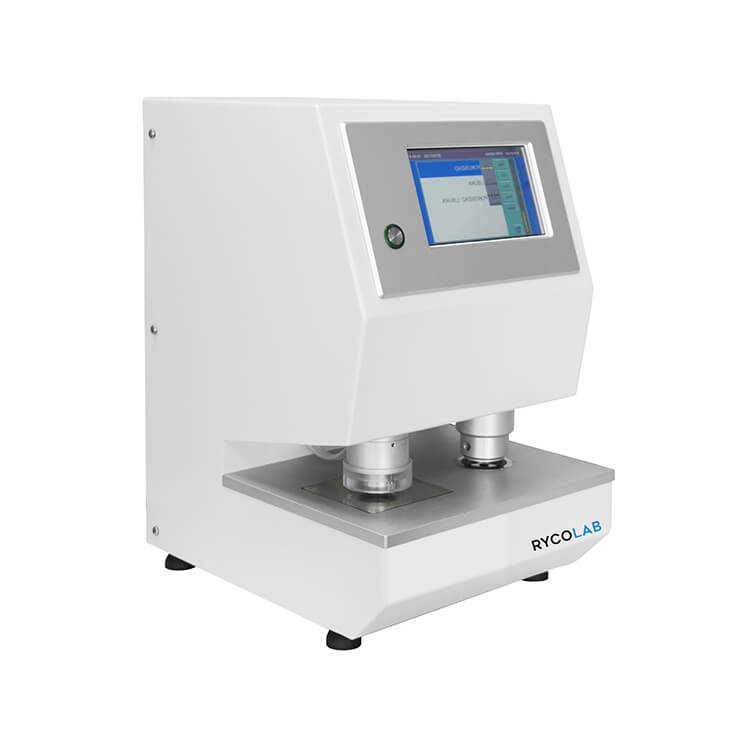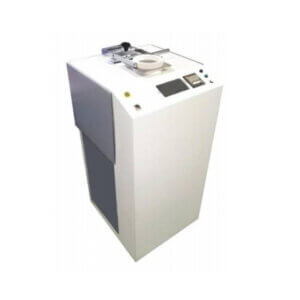Description
- Densometers are the accepted standard for measuring the porosity of materials such as papers, wovens, plastics and membranes.
- All Densometers measure the time required for a given volume and of air (25cc to 400cc) to flow through a standard area of material being tested under light uniform pressure.
- Certain models, such as the S-P-S Tester, are also used to measure surface smoothness and material softness.
- Manual and automatic units available. Conform to TAPPI T-460, ASTM D-726-58 & APPITA/AS 1301-420, BS 5926, CPPA D-14, ISO 5636/5, D-202-77, SCAN P-19 & P-53.
Specifications
The Densometer test measures the time required for a given volume of air (25cc to 300cc) to flow through a standard area of material tested, under light uniform pressure. The air pressure is supplied by an inner cylinder of specific diameter and standardized weight, floating freely within an outer cylinder partly filled with oil to act as an air-seal. The sample material is held between clamping plates having a circular orifice area of 1.0 (standard), 0.25 or 0.1 square inch (optional).Densometer readings may be evaluated on both a direct or indirect basis dependent upon the material and test purpose. They are a direct test of materials which are intended to either resist or permit the passage of air. Indirectly, they are used to measure other physical properties which affect the flow of air through a porous sheet.
Applications include:
- In manufacturing and printing, to control the selection of materials affording the appropriate degree of liquid (ink, varnish, sizing) absorption.
- To test filters, porous bags & materials where controlled porosity is essential.
- To test insulating materials for air resistance.
- To supplement other physical tests enabling regulation or strength of manufacturing process to give the desired formation, appearance or strength since there is a close correlation in a given material between air permeability and these other properties.
The most popular Densometer sold for measuring porosity and air permeability in materials of average values. With options such as smaller orifice plates, materials of lower permeability may be effectively tested. By using a 5 oz. cylinder, materials of a higher permeability can be tested (Model 4118).
The Model 4110 includes a 20 oz. cylinder and 1.0 square inch orifice lower clamp plate and upper adapter. The 20 oz. cylinder is graduated to 25cc for the first two spaces and 50cc for each space thereafter, for a total of 300cc. Typical of all new-style densometers, clamping pressure is supplied by turning a knob which raises and locks the lower lifting assembly and clamp plate. Both the automatic timer and instrument base are recommended with these densometers and are ordered separately.





